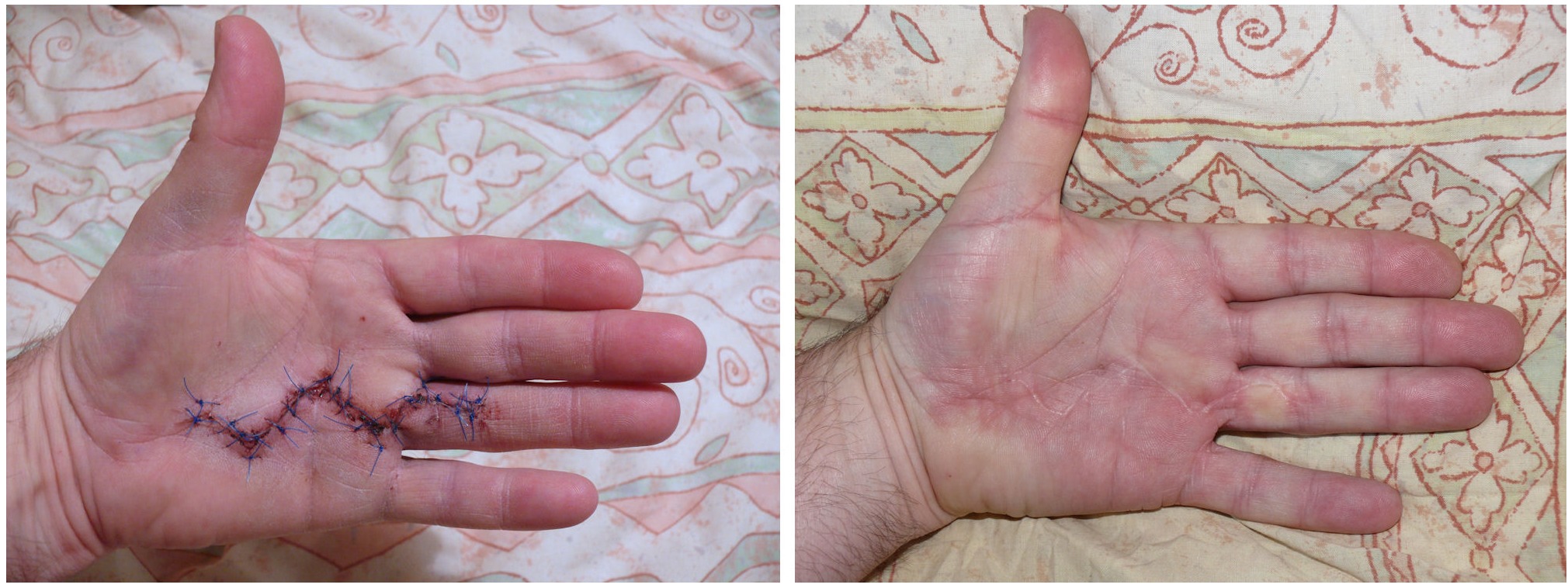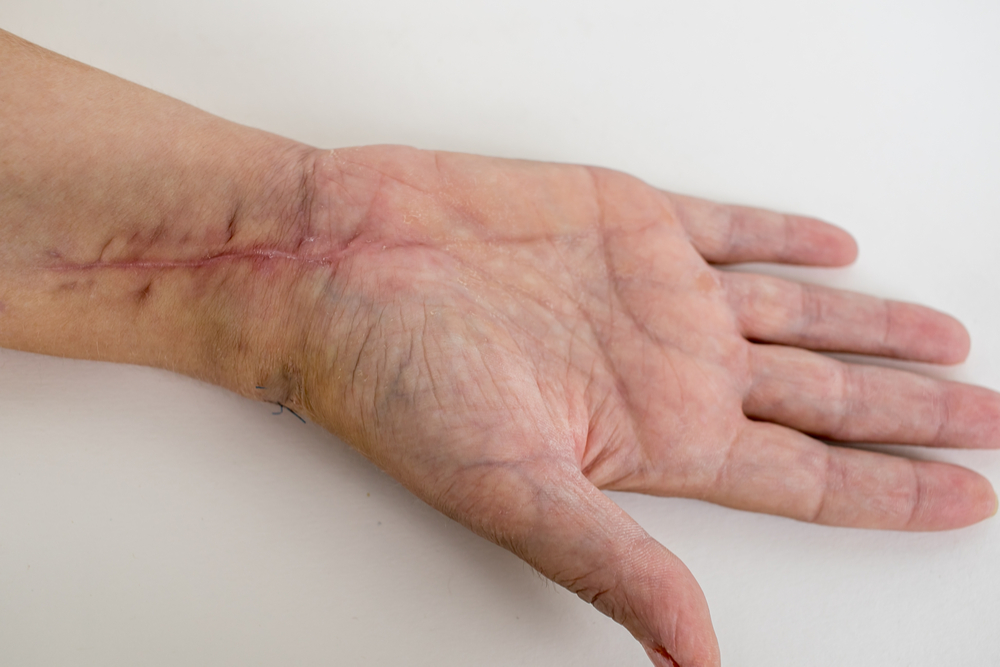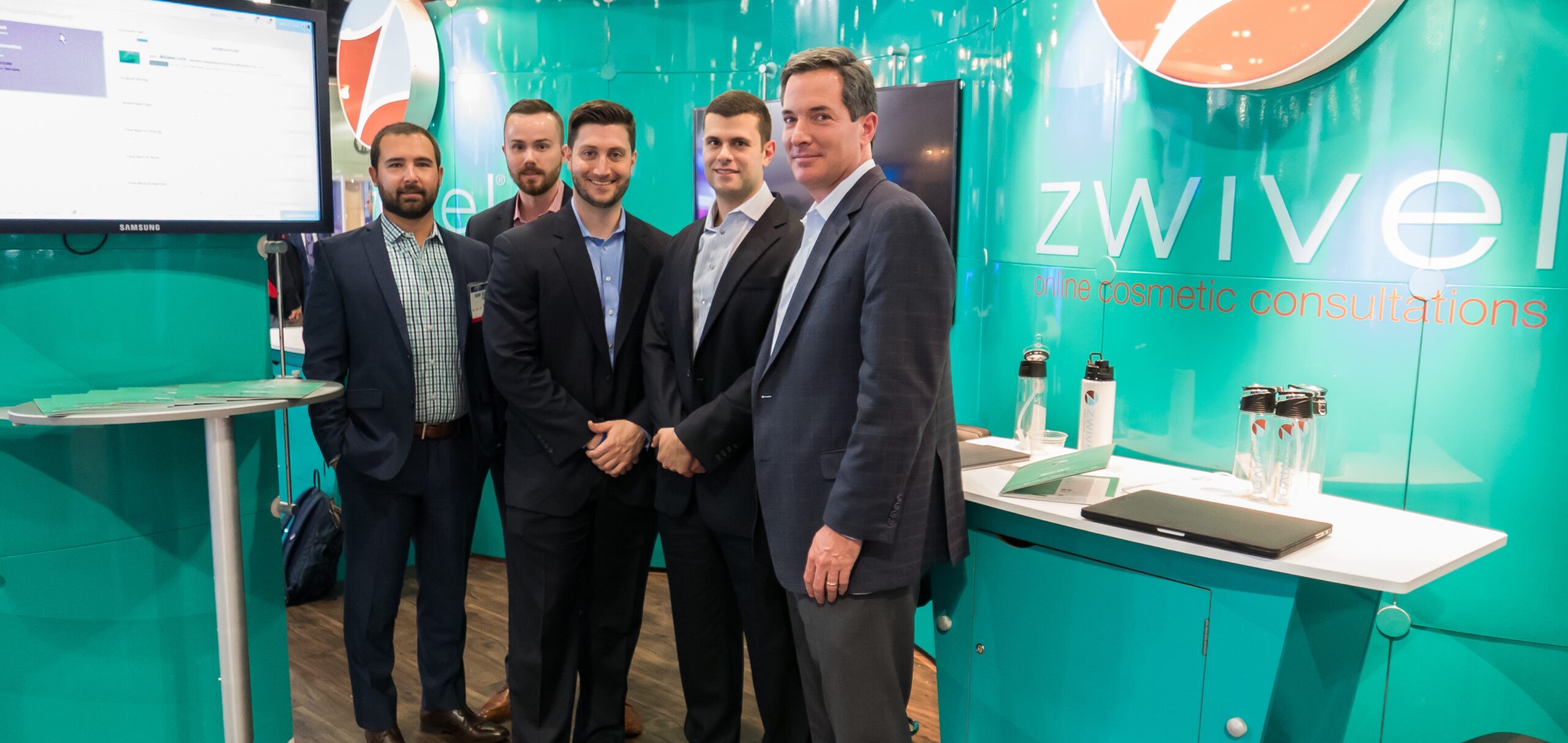- Scar revision cannot eliminate scars, but it reduces their appearance significantly.
- Z-plasty and W-plasty are two reliable and commonly used scar revision techniques.
- Non-surgical techniques are often used in conjunction with surgery.
- Skin grafting and tissue expansion may be additional options.
There are several scar revision techniques available. Where the scar is on your body and how it got there will help to determine which technique will be most successful. Though these procedures can be surgical or non-surgical, we’ll be looking at two widely used surgical techniques known as Z-plasty and W-plasty.
What is a scar?
After a traumatic injury or event, scar tissue forms during the natural process of healing. Whatever may have caused the damage, our bodies replace damaged skin with fibrous tissue in the process of closing the wound. Because that fibrous tissue is more tough than what it’s replacing, it looks different from normal, undamaged skin. Depending on the amount of fibrous tissue needed to heal the wound, the new skin can be classified as one of several types of scars – as a mature, immature, linear hypertrophic, widespread hypertrophic, minor keloid, or major keloid scar.
What is scar revision?
Scar revision surgery is an attempt to minimize a scars appearance by blending it into the surrounding skin texture. It cannot eliminate a scar completely, but it reduces its appearance significantly.
Whichever category a scar falls into, a plastic surgeon will assess scar tissue by examining its color, vascularity (the amount of surrounding blood vessels), light reflection, texture, contour, elasticity, height, distortion, and proximity to important parts of the body, as well as relaxed skin tension lines, or RSTLs.
RSTLs are lines, invisible to the untrained eye, that are formed in the skin by its intrinsic framework. Plastic surgeons know that by cutting the skin parallel, instead of perpendicular, to RSTLs will enhance healing and decrease the chance of developing new scars.
Are you a good candidate?
A qualified plastic surgeon will also evaluate a patient’s expectations. Often patients expect scar treatment to entirely erase scar tissue, but that’s not always possible. It’s likely that it will require multiple surgical procedures over months or years to get the result they’re looking for. The patient’s nutrition is also important to the success of surgical revision – a balanced diet rich in vitamins A, C, E and zinc supports wound healing and healthy protein synthesis.
On the contrary, certain things can compromise surgical scar revision. For instance, tobacco use promotes blood clots and constricts blood flow. Patients should stop smoking for days to weeks before surgery, and usually for a few weeks after surgery as well. Finally, medical conditions like diabetes and viral infection can make it more difficult for the body to heal.
Scar revision procedure
Like most kinds of reconstructive surgery, scar revision has general steps that will apply to all or most patients, as well as very specific steps that will only apply to specific individuals. This is especially true when it comes to the treatment plan. Before surgery, your surgeon should discuss all of the treatment options with you. They should also give you a general outline of the revision procedure:
Anesthesia
Some form of anesthesia is always used prior to scar revision. Depending on the patient’s needs, local anesthesia, intravenous sedation, or general anesthesia will be used.
Surgery
During surgery, your doctor will make incisions, allowing for RSTLs and hair follicles, manipulate the scar tissue, and then take the necessary measures to ensure adequate wound closure and repair. (The actual scar revision is a result of how the surgeon has made the incision. Many incision techniques are possible, but Z-plasty and W-plasty are the most common.)
What is Z-plasty scar revision?
The most commonly used scar revision technique, Z-plasty, gets its name from the shape formed by the diagonal line of the scar itself and the horizontal lines made by the incisions at each end of the scar. The resulting Z shape creates 60-degree angles between the scar and the incisions, allowing the tissue to lengthen by 75% and forcing the scar to rotate 90 degrees.

The complexity of this geometry makes scars less noticeable by realigning them to the RSTLs. Z-plasty is ideal for scars that are linear, webbed, contracted, pincushion-like, raised, or depressed. To minimize tension and the Z shape of the new scar, multiple Z-plasties may be required for some patients.
Dr. Jacob D. Steiger, a Boca Raton, FL plastic surgeon and double board-certified physician says that Z-plasty is most appropriate to “lengthen a constricted scar in order to align it in a better direction with the skin and to break a scar up to camouflage it.”
What is W-plasty scar revision?
W-plasty minimizes the appearance of scars, essentially by fooling the eyes. In this technique, multiple triangles are cut along the long side of the scar and then mirrored on the other side of the scar. When sutured, these zigzag patterns create an irregular broken line that reflects light poorly, making the original scar more difficult to see.
W-plasty works best for linear scars longer than 2 cm at an angle less than 35 degrees to RSTLs, like short scars on the forehead or cheeks and scars near the hairline or on curved parts of the body. This technique is not suitable for longer scars, however, as the zigzag pattern would make the scar more noticeable and may increase the size of the wound.
Regarding W-plasty, Dr. Steiger says that it “should be used on areas where there is adjacent loose tissue such as the forehead, temporal regions, neck, cheeks, or chin areas that are concave and areas that are curved.”
RELATED: Healing Self-Harm Scars — How Plastic Surgery Can Renew Your Spirit
What is the necessary aftercare for scar revision?
In order to achieve the best results, your plastic surgeon may opt to employ one or more of the following non-surgical techniques during the days or weeks following surgery:
- Topical treatments (gels, tapes, compression) – These support the healing process, reduce the chance of irregular pigmentation, and treat whatever discoloration may have already been present, as seen with acne scars.
- Injectable treatments (fillers, steroid injections) – Fillers can raise skin after tissue loss, whereas steroid injections can flatten fibrous tissue accumulation so that the area of treatment is smooth and level with undamaged skin.
- Surface treatments – These are cosmetic procedures that address surface irregularities as well as the upper layers of your skin. For example, laser resurfacing triggers new, healthy skin to grow, and chemical peels soften old scars to improve final results. Microdermabrasion, which “polishes” or refines the skin, may also be used for facial scars.
What is the recovery time for scar revision?
The American Society of Plastic Surgeons encourages patients to recognize that scar revision takes time and relies heavily on the natural healing process. Regular post-surgery follow-up is an essential part of the process. It will take several weeks for normal movement to return to the area where surgery was performed, and it will be several months before patients see the final results. Despite all that time spent patiently waiting, the results of scar revision are long-lasting.
What is the cost of scar revision surgery?
The average cost of scar revision varies dramatically with the area that needs to be revised. Costs range from $250-$3,000.
Other scar treatment options
For scars that cover a large area, neither Z-plasty nor W-plasty are effective. In such cases, a plastic surgeon may turn to skin grafting or tissue expansion. Skin grafting removes scar tissue and replaces it with healthy skin that’s been transplanted from an inconspicuous area of the body.
If skin grafting isn’t an appropriate option, tissue expansion may be. It involves an inflatable balloon called a tissue expander, which is surgically placed under the skin near the scar. A sterile solution is slowly added over time to fill the balloon and stretch out the healthy skin. After enough stretching has occurred, the scar tissue and tissue expander are removed and surgically replaced with the stretched, healthy skin.









